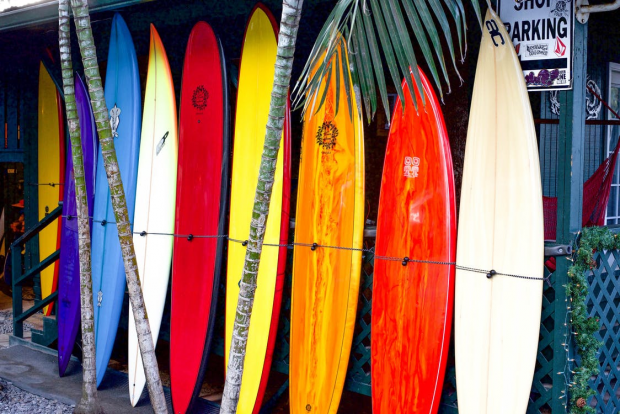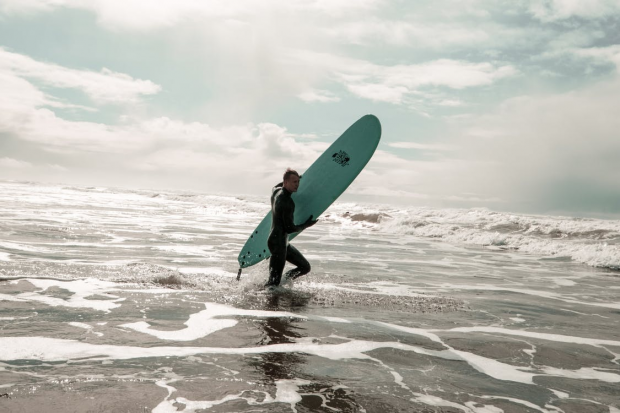A Simple Guide – How To Choose the Right Surfboard If You’re a Beginner?
Are you a beginner surfer? If so, you may be wondering how to choose the right surfboard. It can be tricky, however, with proper preparation, it will pose no issue. In this blog post, we will discuss the different types of surfboards and what each one is best for. We’ll also give you some tips on how to choose the right board for your skill level and surfing style. So read on for all the info you need to start shredding waves like a pro!

Choosing the right surfboard for the beginning of your surfing experience
Surfboarding is an amazing water sport that allows you to enjoy the waves and scenery while getting a great workout. It is, however, important to choose the right surfboard when you are starting out. The wrong surfboard can make your experience frustrating, so it is worth taking the time to select the best one for you. Today, we help you learn the difference between boards, from mini mal boards to longboards, and how to know which will work best for your level as a beginner surfer. Furthermore, we will touch on the different aspects of a surfboard, such as materials and fins, so that you feel confident when discussing boards with more experienced surfers or purchasing your first board.
Understanding the three main types of surfboards
There are three main types of surfboards: shortboards, longboards, and stand-up paddleboards (SUPs). Each one has its own unique benefits and drawbacks, so it’s important to choose the right type of board for your needs.
- Shortboards are the most popular type of board among experienced surfers. They are fast and maneuverable, making them ideal for surfing in small waves. However, shortboards can be difficult to control, so they are not recommended for beginners.
- Longboards are the best choice for beginners. They are larger and more stable than shortboards, so they are easier to paddle and control. Longboards are also great for surfing in larger waves. However, they are not as fast or maneuverable as shortboards, so they may not be the best choice for experienced surfers.
- Stand-up paddleboards (SUPs) are a type of board that is growing in popularity. SUPs are larger and more stable than both shortboards and longboards, making them ideal for beginners. They are also great for surfing in larger waves. However, they can be difficult to turn, so they may not be the best choice for experienced surfers.
Now that you know the different types of boards, it’s time to choose the right one for you. Consider your skill level, surfing goals, and wave conditions when making your decision. And don’t forget to have fun!
Picking the best surfboard size
The next thing you need to think about is what size board you should get. The general rule of thumb is that the larger the waves, the larger the board. So, if you’re just starting out, you’ll want a larger board that is easy to paddle and stable in the water. As you become more experienced, you can start to experiment with smaller boards. Just remember that it’s always better to be on the side of caution when choosing a board size. It’s better to have a board that is too big than one that is too small. Furthermore, the width of the board is also important. A wider board will be more stable than a narrower board, making it a better choice for beginners.
Remember, you are looking for something for beginners
You do not want your first board to be too small. With that in mind, consider a board that is over seven feet long. This will give you plenty of space to paddle and catch waves. If you are taller than six feet, you may want to consider an eight-foot board. What about the width? The width of the board is also important. You want a board that is wide enough to provide stability, but not so wide that it is difficult to maneuver. A good rule of thumb is to choose a board that is between 20 and 22 inches wide.

The thickness of the board is also something to consider
When you are looking at board size, you will also want to consider the width and thickness of the board. The wider and thicker the board, the more stable it will be in the water. However, a wider and thicker board will be more difficult to paddle and maneuver. So, if you are just starting out, you will want to choose a board that is on the thicker and wider side. As you become more experienced, you can start to experiment with thinner and narrower boards.
Fins are another important aspect of the board
The fins on a surfboard help to provide stability and control in the water. There are many different types and sizes of fins; so it’s important to choose the right ones for your board. If you are just starting out, you will want to choose a board with large fins. These will provide more stability and control in the water. As you become more experienced, you can start to experiment with smaller fins.
Take things slowly at first
When you are first starting out, it’s important to take things slow. Don’t try to catch the biggest waves right away. Start with smaller waves, and practice for a while. Later, you can start catching slightly larger waves until you feel comfortable enough. Also, don’t be afraid to ask for help from more experienced surfers. They can give you tips and advice on how to improve your surfing. This is a great way to learn and make the most of your surfing experience. In addition, you would want to start things slowly due to safety concerns, as well as your own confidence.
Catching waves
Now that you know how to choose the right surfboard, it’s time to catch some waves! Start by paddling out to the place you see the waves are breaking. Then, when a wave comes, start paddling towards shore. As you get closer to shore, stand up on your board and ride the wave in. Remember to keep your balance and stay in control. Of course, the more you do this, the better you will become at it. And, before you know it, you’ll be surfing like a pro!
So, there you have it. A simple guide on how to choose the right surfboard if you’re a beginner. Just remember to take every aspect of the board into account and to take things slowly when starting out. Most importantly, don’t forget to have fun! Surfing is supposed to be enjoyable, so make sure you take the time to enjoy it.
